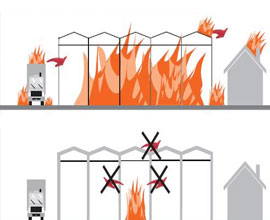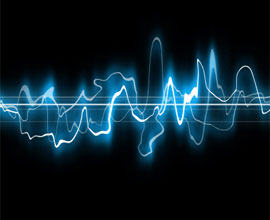Does your latest project require fire rating?
We at B&S Plastering are qualified in the installation of Australian Standards plasterboard (Gyprock) and steel frame systems. Including LaFarge Plastamasta FireShield, CSR Fyrchek and Boral Firestop. Rondo and Nashco steel framing systems.
Sound rating/ Sound proofing
Building that home theatre and want to reduce the noise away from the kiddies room? Or soften the cry of a midnight tango from the adjoining room? Whatever your project, we can substantially reduce the noise to sound rate your area.
It is improbable to be able to completely sound proof a room. This is due to the to the different frequencies of sound. Higher frequency or “pitch” sounds are far easier to soundproof due to their lower energy Lower frequency sounds on the other hand are much more difficult to sound proof, due to their ability to travel via frame and structure.
Sound insulation performance
There are two types of acoustic functions: sound insulation and noise absorption. This section explains common sound insulation terms. [Noise absorption is addressed later in this Section.]
Acoustic terms and definitions
Rw Weighted Sound Reduction Index
Rw describes the airborne sound insulating power of a building element. It is a laboratory measured value. It can apply to walls, ceiling/floors, ceiling/roofs, doors, or windows. The higher the number, the greater the sound insulating power of the building element.
For example, an increase in the Rw of a wall by 10 points will reduce the perceived loudness of sound passing through the wall by about half. Table 1 shows how the sound insulating effectiveness of walls depends on their Rw or Rw + Ctr values.
Table 1
Effect of various walls on sound insulation performance

Rw + Ctr Rw plus Spectrum Adaptation Term
Rw + Ctr is equal to Rw with the addition of a low frequency sound correction, Ctr. The use of Rw + Ctr has become more relevant due to the increase in low frequency sound sources such as surround sound systems, traffic and aircraft noise, drums and bass guitars.
Two walls can have the same Rw rating, but have different resistance to low frequency sound, thus a different Rw + Ctr.
DnTw and DnTw + Ctr Measured on-site
These values are the equivalent of Rw and Rw + Ctr, but measured on-site. Rw is the value measured in an acoustic laboratory, while DnTw is measured on-site.
An on-site measured value of DnTw + Ctr is permitted to be 5 points lower than the Rw + Ctr value. Where the BCA may call for an Rw + Ctr ≥ 50, the same requirement may be satisfied by measuring DnTw + Ctr ≥ 45 on-site.
Ln,w + Ci Impact Sound Insulation Rating
Ln,w + Ci describes how easily impact sound travels through a wall or floor. Impact sound is generated by sources such as dryers, washing machines and heeled shoes on a wooden floor.
Unlike Rw values, better performing walls or floors have lower values. Therefore when specified, Ln,w + Ci values are maximums while Rw values are minimums. For example, the BCA requires some floors to have Ln,w + Ci ≤ 62.
Impact Sound Insulation
Walls that have Impact Sound Insulation are defined in the BCA as walls that do not have any rigid mechanical connection between two separate leaves except at the perimeter.
Systems in this manual that satisfy this BCA requirement are staggered stud plasterboard walls with no noggins, and walls that use resilient mounts.
Impact Sound Insulation with Discontinuous Construction
Discontinuous Construction is defined in the BCA as walls that have a gap of at least 20mm between two separate leaves. Double stud plasterboard walls connected only at the perimeter are classed as ‘discontinuous’. [Refer to the BCA for a complete definition.]
Acoustic requirements
BCA Acoustic Requirements for Sole Occupancy Units (SOU)
Table 2
Performance requirements of the BCA relating to sound transmission and insulation can be satisfied by one of the following three options:

1 Deemed-to-Satisfy Construction
Construct a wall or ceiling system that complies with the deemed-to-satisfy provisions of the BCA Specification F5.2 – 2. This section of the BCA details generic systems that satisfy the acoustic BCA requirements. However in general, more efficient solutions can be found in this manual.
2 Laboratory test or acoustic engineering
Construct a wall or ceiling system with an acoustic rating from this manual. The systems in this manual were either laboratory tested according to the relevant acoustic testing standard or were given an Acoustic Opinion made by Day Design Pty Ltd consulting acoustical engineers of Sydney NSW, or Marshall Day acoustic software.
Acoustic testing laboratories are designed to ensure that flanking paths do not occur. Tested partition systems are constructed with extreme care to achieve optimum performance. For these reasons, on-site performance may be different to laboratory performance. 3. On-site testing
Conduct on-site acoustic testing on a wall or ceiling system. This is a ‘verification method’ accepted by the BCA to confirm the performance requirements are met. Also the effectiveness of the complete installed system can be verified by on-site acoustic testing.
Higher acoustic requirements
Where performance is critical or noise is higher than normal, accredited acoustic engineers should be consulted. Their role is to ensure that design and construction will meet any specific requirements.
Acoustic predictions for systems not published in Lafarge Plasterboard’s literature can often be generated by acoustic modelling software. Contact Technical Services for an acoustic prediction based on the Lafarge product range.
The Association of Australian Acoustical Consultants (AAAC) offer detailed guidance on acceptable acoustic performance. They have published their own star rating system. Ratings range from 2 to 6 stars and are based on field testing by an AAAC consultant to verify that they have been achieved. More information about AAAC Star Ratings for apartments and townhouses is available at www.aaac.org.au
Acoustic testing and actual performance
Attention to detail during construction is important for achieving good acoustics, as performance is governed by the weakest link in the system. Performance of installed acoustic systems may fall short of laboratory measured results. Acoustic measurements in a typical laboratory test represent the maximum performance that can be achieved. Meticulous care goes into laboratory installation of the system.
Actual site conditions are usually less than ideal and sound flanking paths normally exist around the perimeter of the system. Flanking paths may be minimised by sealing the perimeter with acoustic sealant, including behind the cornice and by installing services using acoustically rated details.
Designing for acoustic performance
Acoustic performance is easier and cheaper to achieve if it is considered before construction begins. Good acoustic design includes:
Selection of appropriate systems to limit sound transmission and/or sound reverberation Thoughtful design of the building layout Consideration of flanking paths. Flanking paths are ways sound can travel around barriers, such as through windows, ceiling cavities, under doors and along services.
The sound insulating capability of a basic wall or ceiling system can be upgraded by using a combination of:
- Lafarge SoundShield
- Multiple plasterboard layers
- Insulation
- Resilient mounts
- Resilient channel
- Double stud walls
- Staggered stud walls
- Rondo Quiet Stud
- Sealant in all gaps.



